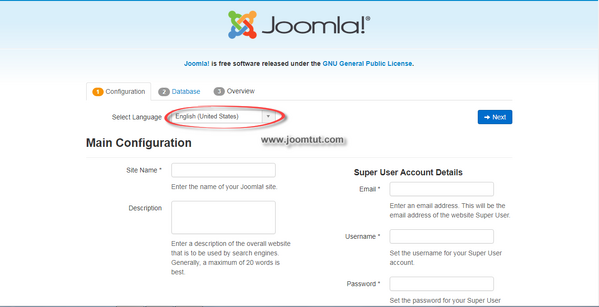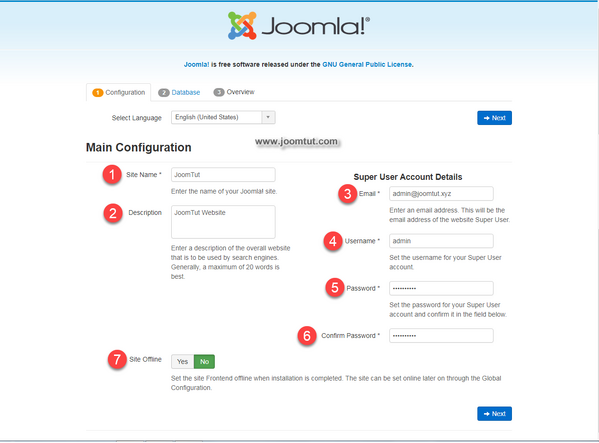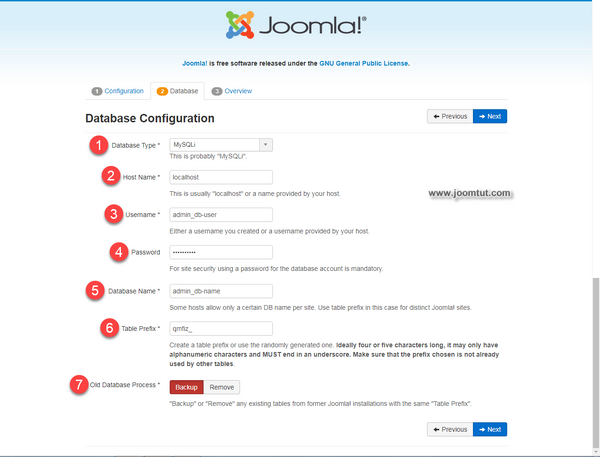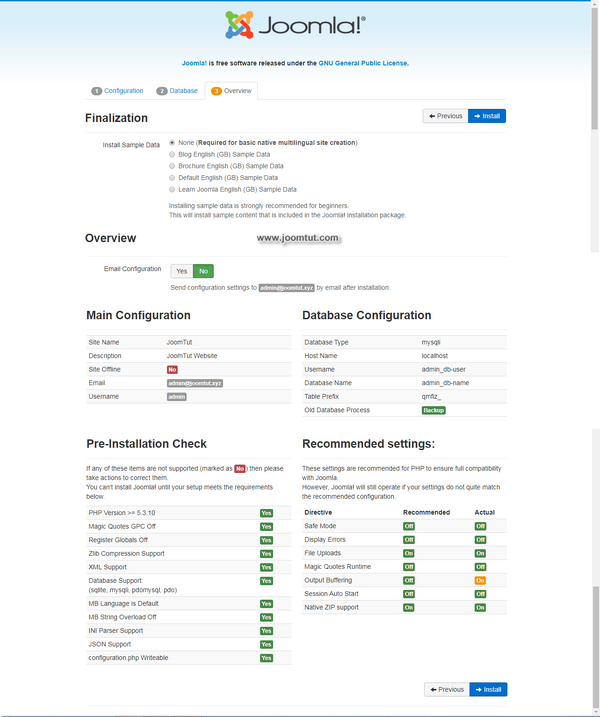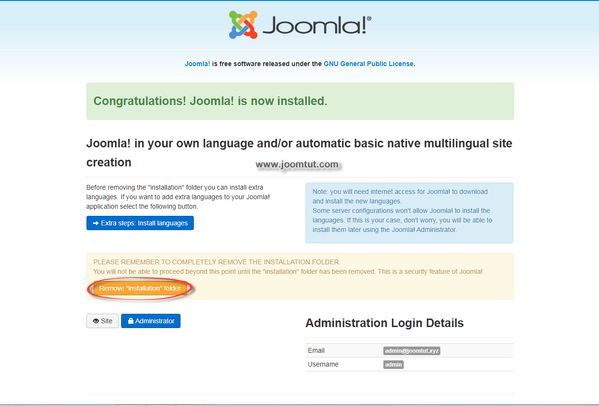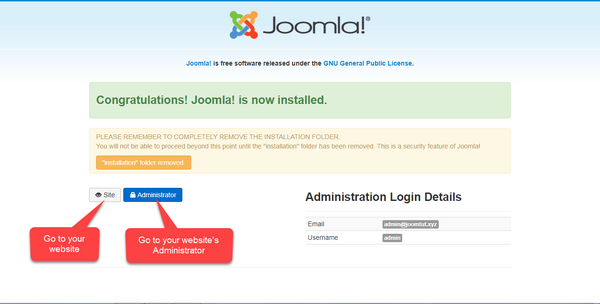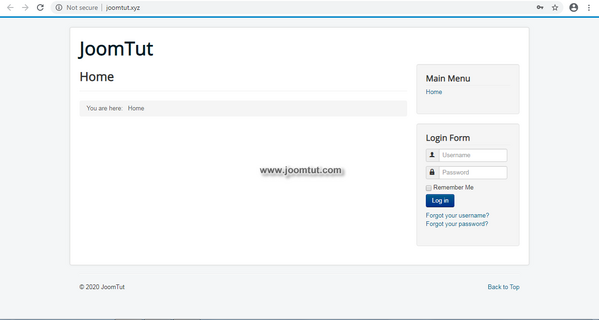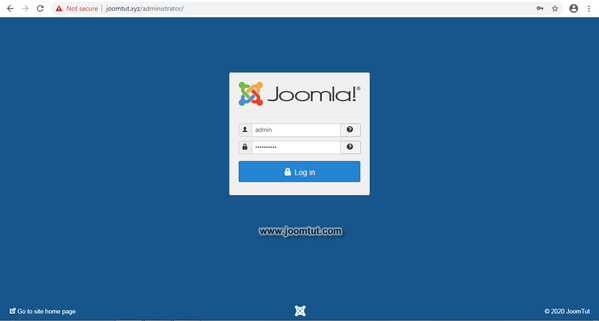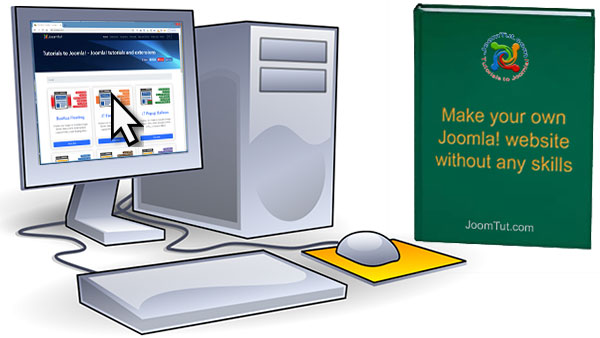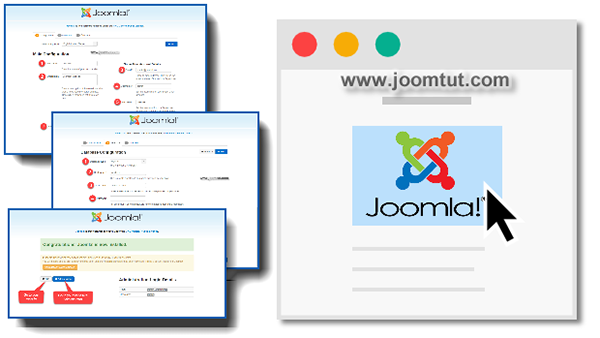
There is no significant difference when you install Joomla! These apply whether you have a dedicated server, a shared hosting plan server, or are installing a copy on a local computer for testing or development. You only need to follow the instructions to complete the installation of Joomla! easily.
Step to complete the installation of Joomla!
1 Download and upload Joomla! package files to your web host
To prepare for install Joomla! you will need to download and Upload Joomla! Package Files to your web host.
Download Joomla! installation package at: https://www.download.joomla.org
There will be a difference when you do this on shared hosting or virtual private server.
Read more: How to upload and extract Joomla! installation package on cPanel shared hosting
Read more: How to get and unzip Joomla! installation package on private virtual server – VPS
2 Now go to your domain name, Joomla! will automatically run the installer
Joomla! will try to identify the Select Language field automatically from your browser's language. You can change this if needed.
3 Fill in the following information in Main Configuration page.
- Site Name - The name of your website. This can be changed at any point later in the Site Global Configuration page.
- Description - Enter a description of your website. This is a global fallback meta description used on every page which will be used by search engines. Generally, a maximum of 20 to 25 words is optimal. Again, this can be changed on the Site Global Configuration page at any time.
- Email - The admin email address. Enter a valid email in case you forget your password. This is the email address where you'll receive a link to change the admin password.
- Username - Joomla! uses a default admin as the username for the Super User. You can leave it as is, change it now which a good security measure or use My Profile in the Administration interface to change it later.
- Password - Remember that super user has maximum control of the site - frontend & backend, so try to use a difficult password. Use My Profile in the Administration interface to change it later.
- Confirm Password - Confirm your admin password.
- Site Offline - Yes - this means when installation is complete, your Joomla! website will display the Site is offline message when you browse to your-domain.com to view the home page. No - this means the site is live when you browse to your-domain.com to view the home page. You can use the Site Global Configuration in the Administration interface to change the Offline status at any time.
When everything on the first page is completed, click the Next button.
4 Setting your database configuration in Database Configuration page
- Database Type - MySQLi is the common database used
- Host Name - Where is your database located? Common is
localhost, but some shared hostings use a specific database server such asdatabbase-server123.yourhost.com - Username - The username used to connect to your database
- Password - The password for your database's username
- Database Name - The name of your database
- Table Prefix - One is generated automatically, but you can change it. For example,
qmfiz_can be used. Just don't forget to put the underscore character_at the end of the prefix. - Old Database Process - Should the installer backup or delete existing tables during the installation of new tables? Click, Yes or No to select your choice. It will not matter when you install joomla! at the first time.
All these choices can be edited on the Site Global Configuration page, under Server options after the installation is completed.
Note, you will break your installation if you change these settings after installation unless you have a complete copy of the current database being used by the Joomla! installation. Common uses would be to update the username and password of the database or to complete a move of an existing installation to a new host with different parameters.
When all the information has been filled in, click the Next button.
5 Finalize. It is now time to finalize the Joomla! installation. The last page of the web browser installation contains all the information about the installation. This includes the options for installing sample data and the installation's configurations.
Install Sample Data and Email Configurations
The first options are for automatically installing sample content to the website and emailing the configuration settings.
- If you are new to Joomla! it would be beneficial to install some sample data to see how Joomla! works.
- If you want a clean joomla! website, please select None.
Overview
You can at this time choose to have the configuration settings emailed to you. If the Email Configuration choice is selected, the Email Password choice will appear. The email password is off by default for security. You can choose to have the password included, just click Yes.
Time to check the configurations of your install and the environment of the installation.
Configuration Check
Checking Your Configurations. If everything is in order, you will see the install at the top of the overview page. If not, this is the place to check and see what may be causing an issue.
The section is broken into 4 groups:
- Main Configuration - All the website specific information, such as the website name, description, admin username, etc.
- Database Configuration - Contains the information about the database Joomla! will use.
- Pre-Installation Check - These requirements must all be shown as Yes, otherwise you will not be able to install Joomla! With the exception of the PHP Version, the rest are usually controlled in the php.ini. You may need assistance from your host in correcting these settings or checking to see if it is possible to adjust them.
- Recommended Settings - These are settings are recommended in your PHP configuration, but will not prevent Joomla! from being installed. You can refer to the above instructions on how they may be changed.
If everything is correct and all checks are passed, you may now click the Install button. This will start the actual installation process.
After you click the Install button, you should see a progress bar with additional information of the installation. Once the installation completes, you should see the success page!
6 Success and finishing up the Installation. Congratulations! Joomla! is now installed. You can install extra languages if you want or start using Joomla! right way without installing extra languages.
There is one last step to complete the installation. You must delete the Installation folder. Click on Remove "Installation" folder.
A success message "Installation" folder removed will appear. Now you can navigate to the Administrator log-in by click on Administrator button or go to your website by clicking Site button.
Your Joomla! website
Your website's administrator
Remember that your website's administrator URL is: http://your-domain.com/administrator

